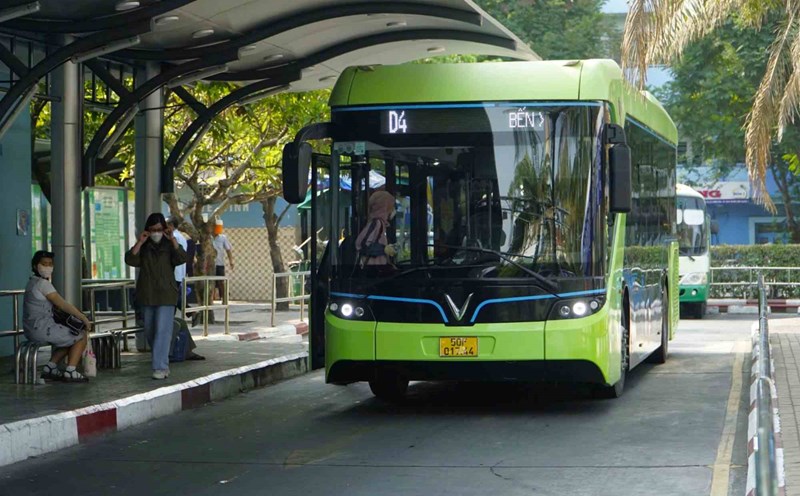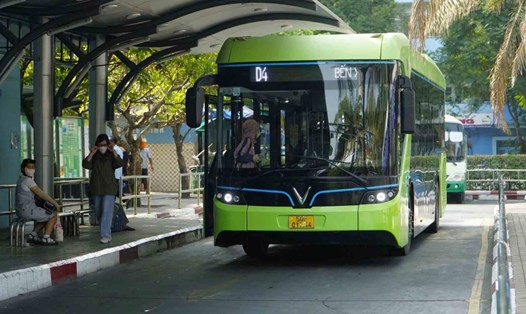Europe speeds up expansion of fast charging stations
The European Commission has just approved a support package of nearly 700 million USD for 70 projects to electrify and reduce emissions on routes of road, maritime, inland waterway and aviation in the region.
The focus of this support is to expand the DC fast charging network across the bloc. More than 1,000 150 kW charging stations, more than 2,000 350 kW charging stations and 586 1 MW charging stations for electric trucks will be installed along the cross-border traffic corridors of the trans-European transport network (TEN-T). This is an unprecedented investment scale, following a network of more than 80,000 fast charging stations that are already operating across member countries.
Experts say the addition of thousands of high-performance charging stations will help electric vehicles move between many countries in the bloc more easily, promoting cross-border transportation by clean vehicles. With 350 kW charging stations, the charging time of electric cars on the highway can be reduced to just a few dozen minutes. In particular, the 1 MW pillar group for trucks is considered a "breakthrough", significantly reducing downtime and operating costs for long-distance transport businesses.
The largest project in this funding package belongs to a French enterprise, with a plan to deploy a total of 288 MW of charging capacity at 45 locations in many European countries.
Not only road infrastructure, 16 airports also receive support to electrify operations to serve the ground; 38 new hydrogen loading stations will be built for cars and trucks; 24 seaports will be invested in Onshore Power Supply systems and clean fuel infrastructure such as ammonia.These projects are part of the AFIF program for the period 2024 - 2025, and have been allocated more than 2.5 billion USD since 2021.
Thanks to the charging station system covering strategic transport routes, many Europeans said that traveling by electric vehicle across borders is now simpler than ever.The cost of charging is also stable, no longer a barrier like in the early stages of the electric vehicle market.
Investing in expanding charging infrastructure is becoming a common trend in the world, as major economies consider this a mandatory condition to achieve the goal of net zero emissions.The Vietnamese problem has therefore become even more urgent, requiring acceleration of charging station coverage speed nationwide.
Charging station coverage in Vietnam, indispensable policies
In Vietnam, the process of "greening" traffic is entering an acceleration phase. 2025 is considered a pivotal year, when the electric vehicle ecosystem expands rapidly in both the number of vehicles and charging station infrastructure.
In 2025, V-Green - the largest charging infrastructure developer today - has continuously put into operation many large-scale charging stations in Hanoi, Ho Chi Minh City, Da Nang and other localities. Currently, V-Green has developed a charging station system with more than 150,000 charging ports for electric motorbikes and electric cars, spread across provinces and cities in Vietnam.
The common point of the new stations is that they are equipped with many fast charging stations from 120 kW or more, some stations reach higher levels, allowing users to fully charge the battery in a short time while still ensuring safety and stability.
Many shopping malls, parking lots, and office buildings have integrated charging stations according to the new standards. On expressways, rest stops have also begun to install fast charging stations to meet the demand for inter-provincial travel by electric vehicle. This network helps users proactively plan their travel, while opening up the trend of "electric vehicle travel" domestically.
Prioritizing the implementation of high-capacity charging stations, located in strategic locations is considered to help create seamlessness in the journey. With the development of new-generation electric vehicles, the demand for fast charging is increasing, requiring charging infrastructure to be one step ahead. V-Green's simultaneous expansion helps users feel secure in switching to green vehicles.
Along with high-speed stations, Vietnam also witnessed a rapid increase in charging stations in residential areas, industrial parks, and new apartment buildings. This forms a multi-layered network, with fast charging stations serving long-distance travel and charging stations at home for daily needs.
Experts assess that coverage of charging stations creates an important foundation for Vietnam to promote green transportation. When the charging network is expanded reasonably, people no longer worry about the distance, logistics businesses can gradually electrify their fleets, reduce fuel costs and meet the requirements of reducing emissions in transportation.
In the context of Vietnam's goal of converting green vehicles along with the roadmap for emission control, the problem of charging infrastructure becomes an indispensable link. European reality shows that any country that is fast in building charging stations will have a big advantage in the transition process.
The fact that V-Green and many domestic enterprises have proactively invested in large-capacity charging stations right now is a positive signal, contributing to making the use of electric vehicles more popular, safer and more convenient. When infrastructure is standardized, widespread and synchronously connected between localities, green transport will no longer be a future trend, but will become a daily choice for people.











